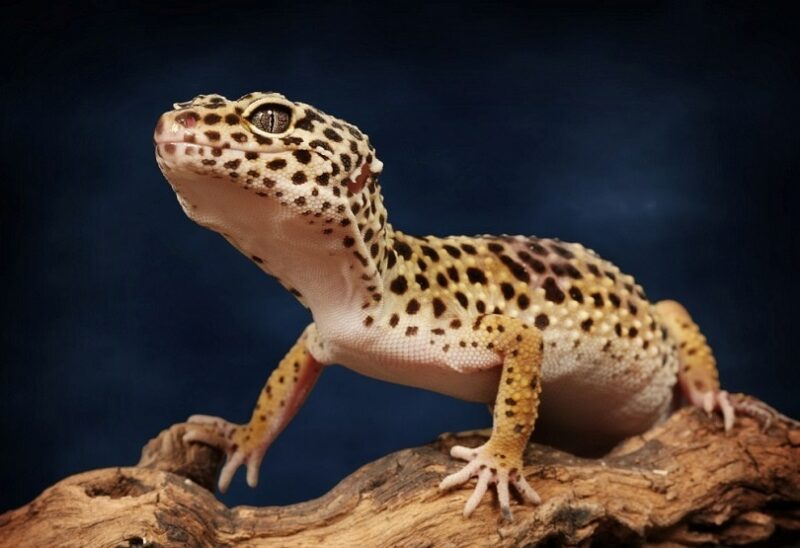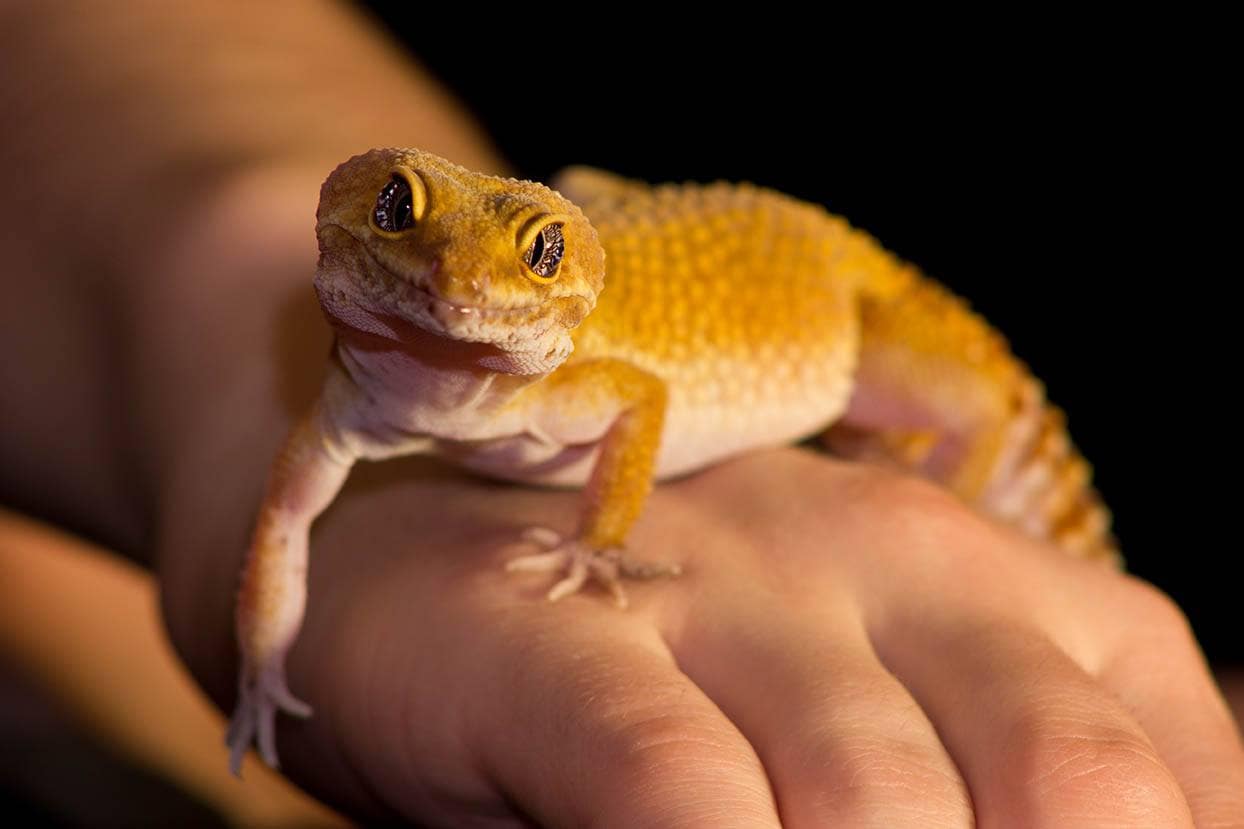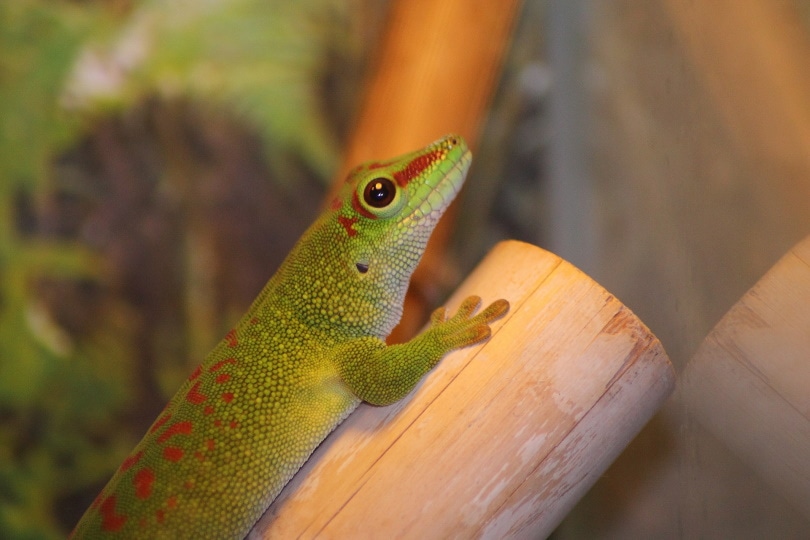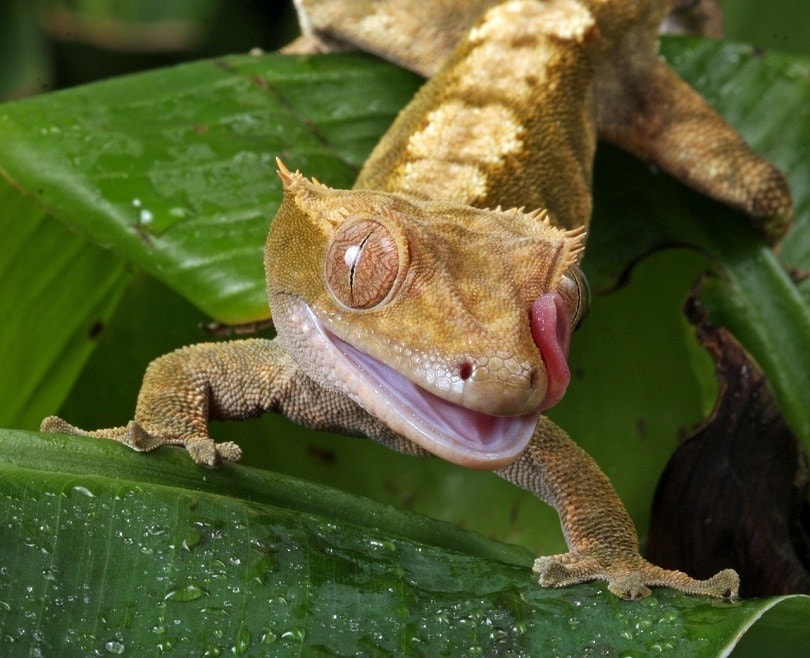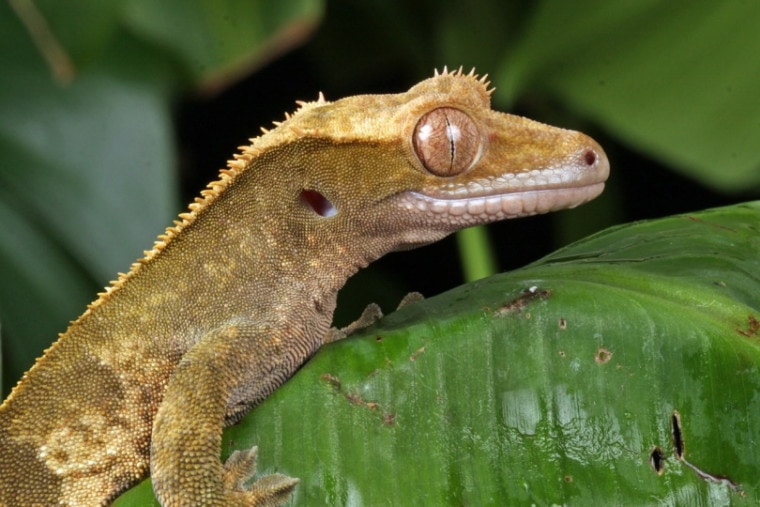
Click to Skip Ahead
It’s a common belief that reptiles like heat and prefer warm to hot climates because they’re ectothermic, or cold-blooded, animals. While reptiles do use external temperatures to regulate their own body temperature, they don’t all need a lot of heat.
The crested gecko is an example of a reptile with remarkable adaptability. The climate of this species’ natural habitat is quite temperate, so one would assume that they don’t do well with extremely hot weather. The preferred temperature range for an adult pet crested geckos is 24–28°C (75–82°F), however, they have shown to adapt and perform optimally at 32°C (89.6 °F) – this should be the temperature of their basking spot.
It’s important to note that while crested geckos have a preferred temperature range, they still do best with having a heat gradient in their enclosure, given how they perform more optimally in slightly higher temperatures. Since the right heat gradient is vital for maintaining bodily functioning, we’ll review everything you need to know to ensure that your crested gecko’s home has the perfect setup.
 Ideal Temperature Levels for Crested Geckos
Ideal Temperature Levels for Crested Geckos
Crested geckos are generally hardy reptiles, and their remarkable adaptability to a thermal gradient well above that of their natural habitat proves this. As previously mentioned, their preferred temperature range is 24–28°C (75–82°F), however, they have shown to adapt and perform optimally at 32°C (89.6 °F)1 , which should be their basking spot temperature.
Giving crested geckos options to regulate their body temperature on their own keeps them active and allows them to optimize their bodily functioning. Temperature can affect vital parts of the crested gecko’s daily life, such as its activity level, digestion, skin health, and growth and development.
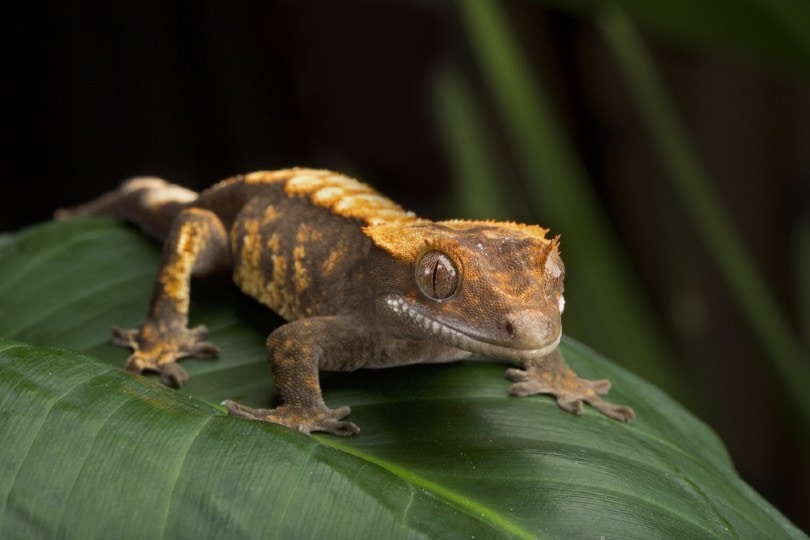
Ideal Temperature for Crested Gecko’s Basking Area
The basking area is a spot where crested geckos can consistently go to when they need to raise their body temperature. The ideal temperature range for their basking area is 32°C (89.6 °F). Crested geckos attempt to thermoregulate and cool off when exposed to temperatures higher than this limit, which means that going over this limit is likely detrimental to their health.
Ideal Temperature for Crested Gecko’s Cooling Area
Crested geckos also need a nice cooling area to help with body temperature regulation. Temperatures in cooling areas should be at around 24°C (75°F), however, they are able to somewhat tolerate lower temperatures than this lower limit (it is still not considered ideal for them). The best way to set up a distinct basking area and cooling area is to have the basking area at one end of the enclosure and the “cool” area on the other end. Crested geckos are arboreal (tree-living), therefore, they will likely not respond well to an environment that has a “cool” area on the floor and an elevated warm zone.
What Causes Temperature Changes in Crested Gecko’s Enclosure?
Multiple factors affect temperature. One of the main contributors to temperature change is the sun. Since crested geckos are usually housed in enclosed spaces, the sun can have a significant effect on raising the temperature. Glass enclosures will take on the greenhouse effect and trap heat.
Like cars on a sunny day, the internal temperature of glass enclosures can get pretty hot, even if the external temperature is relatively cold. So, it’s best not to set up an enclosure right by a window.
Your own climate also affects temperatures in an enclosure. People living in climates with more drastic temperature changes (such as harsh winters) as the seasons change will have to put more effort into regulating their crested gecko’s enclosure.
Lastly, the equipment that you use inside the enclosure contributes to temperature changes. Obvious tools, like heat lamps and heating pads, have a significant impact on raising the temperature.
The type of tank also influences temperature. Glass tanks are the most popular and ideal tanks for crested geckos because they can retain heat and humidity. Wooden tanks and mesh enclosures are also popular choices and have a more natural look. Though it’s more difficult to maintain a consistent temperature with these enclosures, crested geckos are relatively hardy as far as pet lizards go and thermoregulate themselves well, provided they have a suitable basking and cooling area.
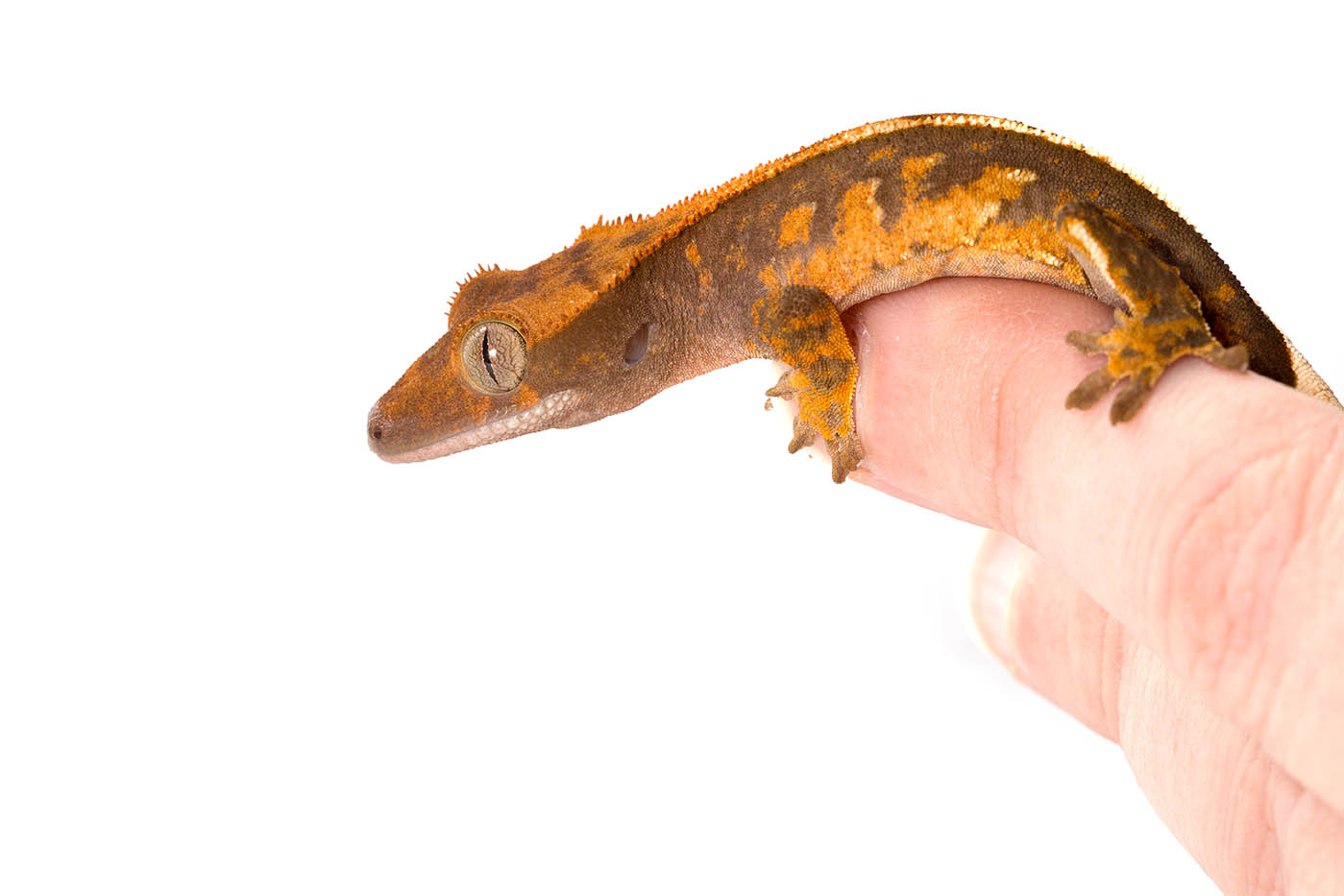
How to Adjust Temperature for Crested Geckos
There are multiple ways to adjust the temperature in your crested gecko’s enclosure. Here are some things you can do to maintain optimal temperature levels and heat gradients.
1. Add a Heat and Light Source
All enclosures should have a heat and light source. The main types of heat sources are lamps and mats. A heating lamp provides both light and warmth inside an enclosure. Broad-spectrum lighting (UVB 290–300 nm) is the best for lizards and may offer health benefits for species that don’t necessarily need UVA and UVB lamps (such as the crested gecko).
2. Hiding Spots
Crested geckos will appreciate hollows and crevices that they can hide inside.
If you’re feeling ambitious, you can install live plants to your enclosure. However, please be mindful that plants naturally interfere with the normal evaporation process and thermodynamics of an enclosure, and need their own specific care too.
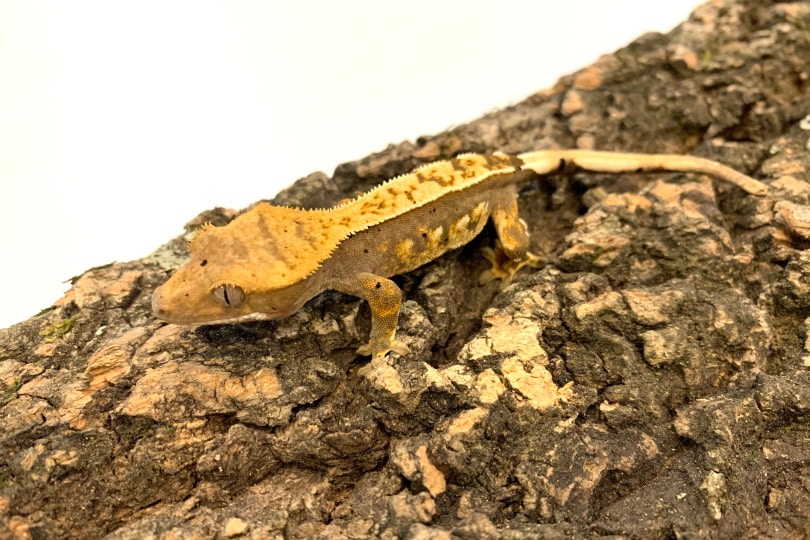
3. Adjust Airflow Inside Enclosure
Airflow and circulation can help lower temperatures. If you live in a warmer climate and are struggling with high temperatures in the enclosure, you may want to try finding a tank that increases airflow, like a mesh habitat. Just keep in mind that these types of enclosures don’t trap humidity well, and the holes should be small enough to prevent escape.
4. Relocate the Enclosure
Sometimes, relocating your crested gecko’s enclosure to a different room may help you maintain optimal temperatures. If you’re dealing with high temperatures, try moving the enclosure to a room that receives less sunlight. If the issue is cold temperatures, place the enclosure in a room with a larger window or set it a little closer to a window. Just make sure not to relocate it right next to a window as the sunlight may be too strong and overheat the enclosure too quickly.
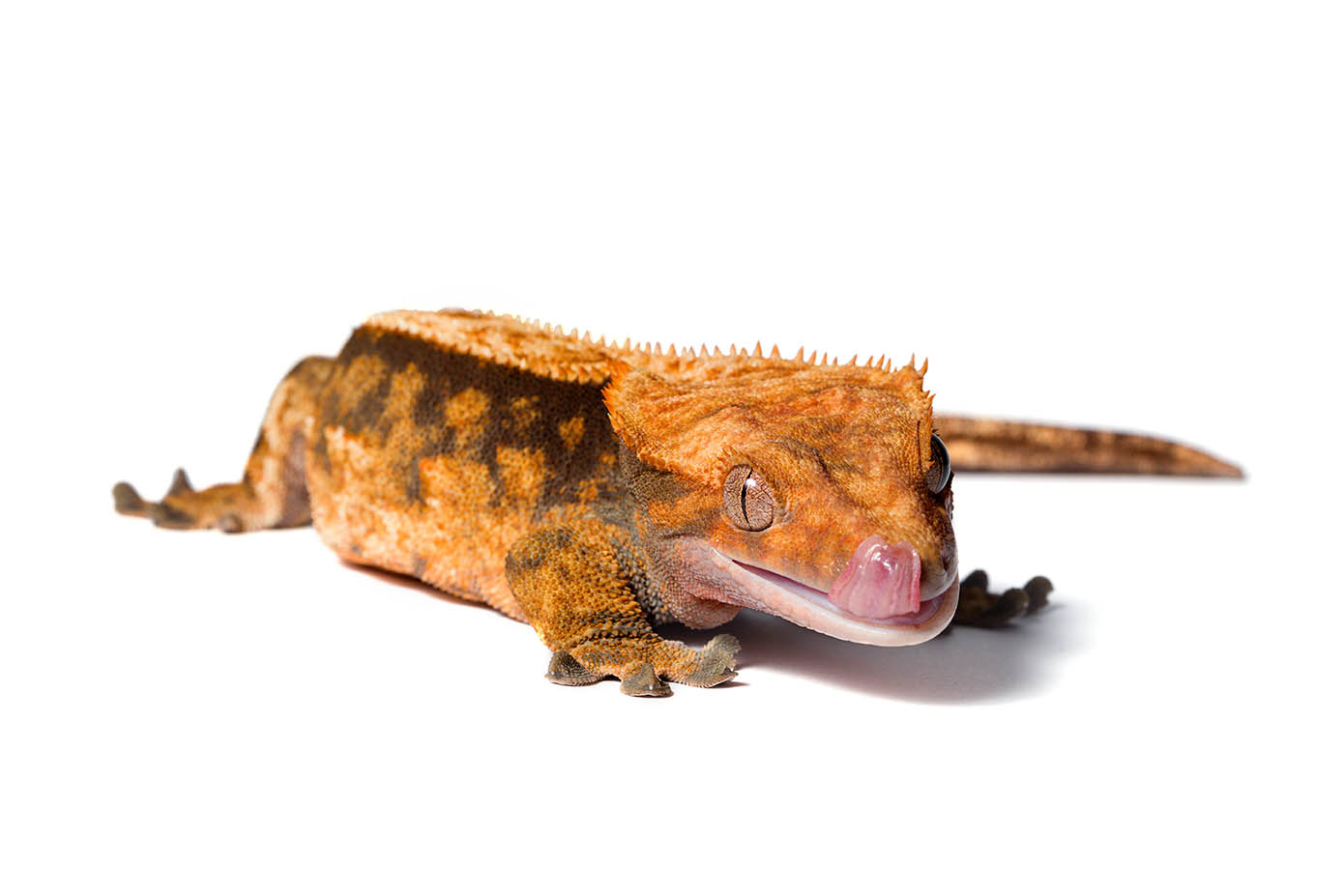
Heat Lamp vs Heat Mats
When it comes to heat sources, heat lamps are the most ideal for crested geckos. While heat mats are great for warming up a reptile’s underbelly, crested geckos may possibly get additional health benefits from a UVA and UVB heat lamp. They’ll do much better with a heat lamp situated at a corner at the top of the enclosure. A heat lamp will provide both sufficient light and warmth.
Frequently Asked Questions (FAQs)
Are Crested Geckos Good Pets for Beginners?
Yes,crested geckos are good pets for beginners. They’re hardy and have less rigorous care requirements than other reptiles. While they’re relatively low maintenance, they still need specific care to stay healthy. Along with having a stable heat gradient, crested geckos need the right kinds of substrate lining their enclosure and plenty of branches and other items they can climb on and use to hide.
Crested geckos are omnivores that usually eat insects and fruit. Most crested geckos kept as pets eat a diet of live insects and commercially prepared reptile pellets. Though easy to care for, it is important to note that may naturally carry bacteria that are harmful to human health, such as Salmonella. Therefore, hygiene is of utmost importance when it comes to handling them.
Should Heat Lamps Be Kept on at Night?
No, heat lamps shouldn’t be kept on at night. Having a heat lamp on at nighttime can confuse a crested gecko and affect their activity and stress levels. Crested geckos are naturally active during twilight hours and don’t need sunlight to go about any nocturnal activity.
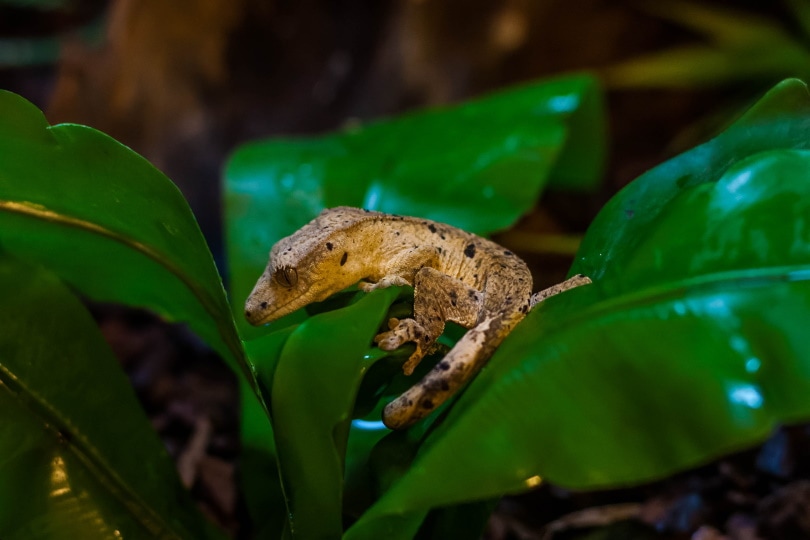
How Can I Keep Terrariums Warm at Night?
If you’re struggling to keep a terrarium warm at night, you can try installing a heating pad and turning it on after you turn off the heat lamp. You can also use a ceramic heat emitter (CHE), which acts like a heat lamp, but it doesn’t use any light. Many CHEs can also fit on regular reptile light fixtures.
 A Quick Reference Guide
A Quick Reference Guide
| Settings | Ideal Temperature Levels |
| General Temperature Preference | 24–28°C (75–82°F) |
| Basking Area | 32°C (89.6 °F) |
| Cooling Area | Around 24°C (75°F) |
| Overnight Temperature | Should stay >20°C (68 °F) |
 Conclusion
Conclusion
While crested geckos are relatively low-maintenance pets, they still need enclosures with heat gradients set at the right temperature. Most crested geckos will be content with average temperatures that range from 24–28°C (75–82°F), and a basking spot around 32°C (89.6 °F). Their enclosures shouldn’t go below 20°C (68 °F) or above 32°C (89.6 °F). This ensures that they can regulate their temperature without experiencing stress and increases their longevity and overall well-being.
Featured Image Credit: No-longer-here, Pixabay

 Ideal Temperature Levels for Crested Geckos
Ideal Temperature Levels for Crested Geckos
